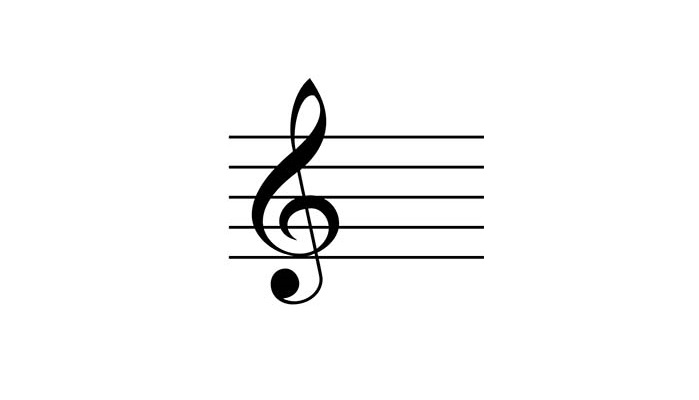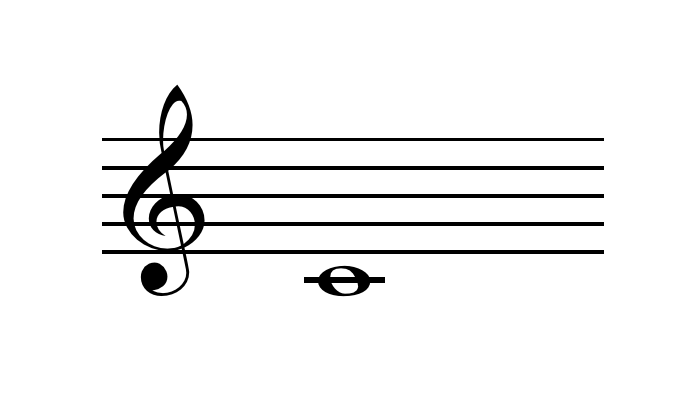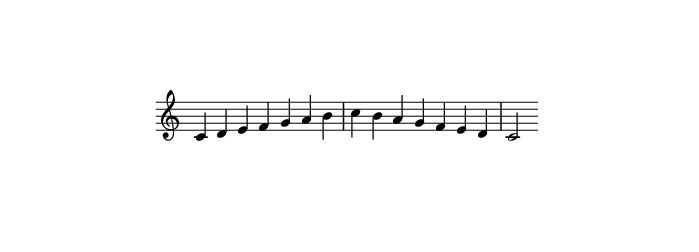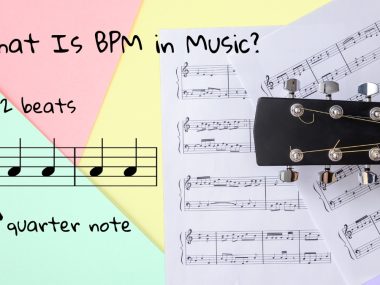You’ve probably heard the word ‘pitch’ before, but have you heard it in a musical context? “What is pitch in music?” is a common question on a lot of people’s minds, especially those who aren’t in the song-making business.
Well, it’s pretty easy to explain in theory. Basically, pitch is how we define the vibration of a musical note.
Sounds simple, right? Yet, there’s a lot more to pitch than meets the eye.
This post will take you on a journey that will leave you with a new appreciation for how music is created. Let’s get started!
What Is Pitch in Music?
In music, pitch refers to the frequency of vibrations produced by an instrument. Sound waves that produce quick vibration frequencies generate high-pitched sounds.
If the vibrations slow down, the sound waves become further apart. Accordingly, the frequency slows down and a lower pitch is produced.
How Pitch Is Created
Any sound you hear has a pitch, regardless of what or who created it. The sounds you hear in traffic or when you stir your coffee, that’s all pitch. When we talk, for example, our voices change pitches to help us convey various meanings.
In music, pitch is pretty much the basis upon which almost all types of melodies are built. Add some rhythm and different durations, and you can create catchy tunes.
Any time you play an instrument, you produce sound waves. It could be by blowing into a trumpet, strumming a guitar, or hitting the keys of a piano.
By generating waves, the air molecules in and around the instrument move back and forth. Air pressure travels outward from the instrument.
This produces sound waves that are picked up by our ears. The frequency of these waves is defined as the speed at which they travel through the air.
Pitch is how our ears pick up on these frequencies. We can also distinguish between high and low pitch, depending on the speed and repetition of the waves.

For musicians to compose melodies, they combine pitch with another important element: duration. Duration is the time each note takes before it transitions onto another note or goes silent.
Another way we can classify pitch is to put them into two groups: definite and indefinite. Definite pitches are made by the guitar, piano, or saxophone, for example. These are clear-sounding instruments whose notes can be easily identified.
Indefinite pitches are those that can’t be clearly recognized. They’re usually produced by percussion instruments, including cymbals, snare drums, or tambourines.
How Pitch Is Measured
There are two ways to measure and write down the pitch of any sound. Read on for more.
The Scientific Method
In science, physics to be exact, when we deal with any sound, musical or otherwise, we measure pitch in hertz (Hz). Hertz is the number of physical vibrations created by a particular note in one second.
Take, for example, a tone with a pitch of 600 Hz. This means that in one second, 600 sound waves traveled from their source to our ears.
The average human ear can hear anywhere from 20 Hz to 20,000 Hz. This is the entire range of human hearing capabilities.
However, just because we can hear sounds starting at 20 Hz going all the way up to 20,000 doesn’t mean we should. Our comfortable, normal range of sound lies between 2,000 and 5,000 Hz.
Keep reading for a quick comparison between high and low pitch.
High Pitch

A high frequency is one way to describe a high-pitched sound. This is usually in the range of 800 Hz and above.
High frequencies can even reach much higher than that, reaching over 20,000 Hz. Those over 20,000 Hz are referred to as ultrasound or ultrasonic sound waves.
In music, high pitches are written on the treble clef of a musical staff. On the piano, they’re played with the right hand.
How about stringed instruments, like the violin, guitar, or bass? To play high-pitched sounds on these instruments, move your fingers higher on the fingerboard. As you go higher, the frequency increases, creating a high pitch.
Low Pitch
When the frequency of the vibrations is low, it’s perceived as a low pitch. Low frequencies are typically 500 Hz and lower.
The lowest pitch our ears can pick up is 20 Hz as we mentioned above. 20 Hz doesn’t sound much like anything.
The closest example would be the lowest note on a bass guitar. Not many people can pick up on that note anyway, which is why it’s not used that often.
On the piano, low-pitched notes are played with the left hand and usually appear in the bass clef. As for stringed instruments, low pitches are played low on the fingerboard.
The Music Theory Method
In music theory, pitch is measured through notations on a staff. Does this mean that pitches and notes mean the same thing? Can we use them interchangeably?
Although we use them in the same context, pitch and note refer to two different things.
We mentioned earlier that we can measure pitch by writing down notes on a staff. So, how do we do that exactly?
Well, they’ve come up with an ingenious way of identifying pitches. They’ve assigned each of the seven notes a letter of the alphabet, from A to G.

They’ve, then, taken these notes and divided them into intervals, or half-steps. Some people also refer to intervals as semitones. In Western and classical music, there are 12 semitones.
When describing the pitch of a note, musicians use the note’s letter name and the octave in which it appears. As a reference point, middle C goes by the pitch name C4.
Let’s take another example. How would you write note A in the third octave of the standard music scale? You’ll write it as A3.
If the note is sharp, this means it’s higher in pitch by half a step. A sharp A note on the third octave will be referred to as A#3. Flat notes are notes that are lower in pitch by one semitone, as in the example Aь3.
Semitones fall into three major categories: major scale, minor scale, and chromatic scale.
Major Scale
Major scales are the foundations of Western music. They’re made up of a series of seven notes that consist of whole steps and half steps.
Whole steps are the white adjacent keys on a piano. The half steps are those found between a white key and a black one.
Minor Scale
There are three minor scales: natural, harmonic, and melodic scales. Natural minor scales contain no sharp or flat notes. The notes A, B, C, D, E, F, and G are the seven notes of the A minor scale.
Harmonic minor scales are played by raising the seventh note of the standard minor scale half a step. So, going up the A harmonic minor scale, the notes would be A, B, C, D, E, F, and G#.
To play the melodic minor scale, you’ll need to raise both the sixth and seventh notes of the standard minor scale by a half-step. The notes will be played as A, B, C, D, E, F#, and G# going up the scale.
The Chromatic Scale

There are 12 known notes from which all music is created. They consist of semitones, or half steps. Each semitone is either one below or above the note that precedes it.
These notes are what we call the chromatic scale.
- C
- C sharp/D flat (C#/Dь)
- D
- D#/Eь
- E
- F
- F#/Gь
- G
- G#/Aь
- A
- A#/Bь
- B
How Pitches and Notes Work Together
Creating beautiful tunes and harmonies is like magic. You mix together several notes, and before you know it, you’re producing award-winning hits! Or at least making music to wow your family and friends.
The trick, however, is to find notes with similar pitches. Below are a few ways of how pitch and notes work to create unique tunes!
Pitches and Notes
Let’s start with the basic note. In music, a note refers to a specific pitch on the musical scale. Each note can be played in different octaves.
In other words, each note has a distinct pitch depending on where it’s played on the instrument. Notes played high on the staff are higher in pitch and vice versa.
Bear in mind that for each note to match its pitch, the instrument has to be in tune. Otherwise, the notes won’t sound right.
C Notes

On the piano, a C note can be one of eight different pitches. You’ll find them below in order from the highest pitch to the lowest.
- 01 Hz
- 00 Hz
- 50 Hz
- 25 Hz
- 63 Hz
- 81 Hz
- 41 Hz
- 70 Hz
Notes on a C Major Scale
Let’s take a look at a list of the pitches of the eight notes on a C major scale.
- High C = 523.25 Hz
- B = 493.88 Hz
- A = 440.00 Hz
- G = 392.00 Hz
- F = 349.23 Hz
- E = 329.63 Hz
- D = 293.66 Hz
- Low C = 261.63 Hz
Calculating the 4ths and 5ths
The 4ths and 5ths of any note are also closely related from a mathematical point of view. The pitch of the 4th of any main note is exactly 4:3.
Let’s take note G from earlier. The pitch of the 4th of middle G would be calculated as follows:
784.00 x 4/3 = 1,046 Hz (C).
The 5th note is 3:2 above the main note. For our middle G, it would mean 784 x 3/2, which would give us 1,174.66 Hz (D).
Pitches and Chords

Notes found on the same scale, especially on the same musical chord, are connected by pitch. Let’s take note G mentioned above. It has a pitch of 392.00 Hz, which means it’s in the lower part of the frequency spectrum.
So, what do we do if we want to find the pitch of the G of a higher octave? We double the frequency by multiplying 392 by 2, which will give us 784. This is the pitch of middle G on the C major scale.
Check out the pitch of all the G notes in music from the highest frequency to the lowest.
- 93 Hz
- 96 Hz
- 98 Hz
- 00 Hz (middle G)
- 00 Hz
- 00 Hz
- 98 Hz
- 49 Hz
Pitches and Intervals
There are quite a few things you can do just by knowing the pitch for one note. You’ve just learned the mathematical formula for finding the 4th and 5th notes on a major scale.
Another one is figuring out the ratio between intervals on both a major or minor scale. An interval is how two distinct pitches interact. The size of an interval depends on the frequencies of the two pitches.
Intervals can be expressed when notes are played in succession. This is what musicians refer to as a melodic interval.
An alternative approach is called harmonic intervals. It’s when two notes with two different pitches are played at the same time.
Pitches and Octaves

The octave is the interval, or space, between two notes with the same letter name in succession. These two notes are either above or below each other with a 2:1 frequency, or pitch, ratio.
Let’s use note G as an example. If we take 392.00 Hz of G and double it, we get 782.00 Hz. The first pitch in the octave is produced by slower vibrations than the former.
In other words, the first note has a lower pitch than the second one. Still, they can sound the same to the untrained ear, even though one note is vibrating at half the speed of the other.
Pitches and Semitones
Semitones are the intervals between two neighboring keys on a piano. There are twelve semitones in every octave, including the pattern of black and white keys.
An example of semitones is the B and C notes next to each other. Another example is the adjacent pair of ever D and D#.







